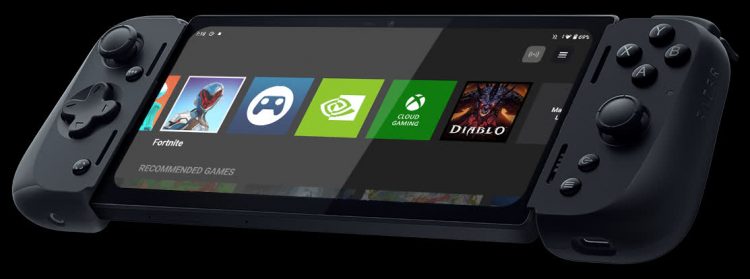Something to look forward to: Razer’s new handheld comes with some impressive specs for its price point, as it costs just $50 more than Logitech’s G Cloud cloud gaming console. Arguably the most interesting part is the optional 5G and LTE support, allowing users to stream games anywhere with decent cell coverage without having to be connected to a Wi-Fi network.
At RazerCon 2022, Razer unveiled its first-ever cloud gaming handheld, the Razer Edge. It will compete against Logitech’s recently announced G Cloud, as well as more traditional handhelds that render games locally, such as the Steam Deck and Nintendo Switch.
Razer’s new handheld console actually has two parts — an Android 12 tablet housing the internals and the screen and the detachable Razer Kishi V2 Pro controller. The latter is a more advanced version of the company’s Kishi V2 smartphone gamepad, as it includes improved haptics and a 3.5mm headphone jack.
The Edge features an impressive 6.8-inch AMOLED touchscreen with a resolution of 2,400 x 1,080 and a 144Hz refresh rate. The refresh rate alone should provide a massive visual upgrade over most other handhelds with 60Hz displays, but battery life will likely take a hit. Razer says that users can stream PC games locally at up to 144 fps via the Steam Link app. The Edge comes with other popular streaming services preinstalled, including Nvidia GeForce Now and Xbox Cloud Gaming, and you can also play Android games on it directly.
Powering it all is an actively-cooled Snapdragon G3x Gen 1 chipset, which Qualcomm specifically developed for handheld game consoles. The Edge also has 8 GB of LPDDR5 RAM, 128 GB UFS 3.1, a microSD card slot, and support for Bluetooth 5.2 and Wi-Fi 6E connectivity, allowing it to use the less-congested 6 GHz bands. Rounding out the spec sheet is a 5,000mAh battery and a 5-megapixel front camera you can use for streaming to Twitch or YouTube.
The Razer Edge starts at $399.99 for the standard model, and you can already reserve one today for $5 to be among the first to receive it when it starts shipping early next year. The company also plans to release a 5G version through Verizon, which will support the carrier’s sub-6GHz and mmWave bands.
Source by www.techspot.com











